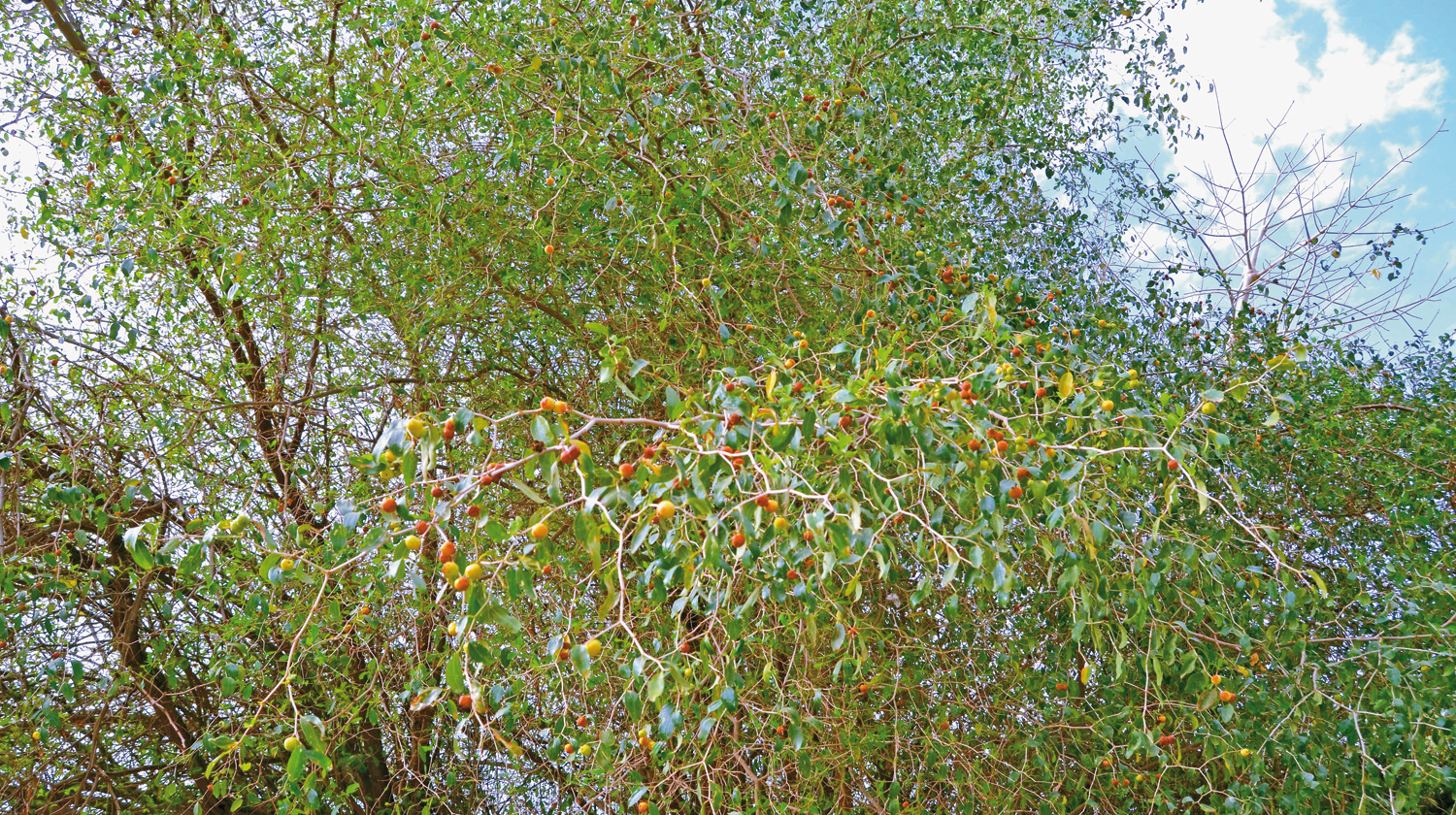

Conserving the past is not limited to heritage, culture, architecture or artefacts, it also includes rare trees, plants and species that face extinction. Sidr is one of the much-loved trees that is native to the Sultanate and occupies an important place in the history of Oman and dates back to thousands of years. It continued to be part of Omani civilisation by surviving harsh weather conditions and other factors including urbanisation. Omanis love it not only for its lush green shade, but also for its usefulness in the households.
BENEFITS OF SIDR
Sidr, with its scientific name Ziziphus spina-christi, has several benefits. History has it that Sidr trees were used for therapeutic and cosmetic purposes for centuries. Its wood, apart from being used for cooking and burning to keep the winter chill away, is also used in building purposes.
In the traditional Omani craft industry, Sidr wood is used for making spoons, shovels and even boats. The leaves of the tree are used as feed for camels and goats.
The tree also has a nick name – Sidr Honey – as it is a source of income from the honey harvest as it is an important source of food for honey bees during the flowering period. This type of honey maintains its quality for two years, and its density increases as retention period increases.
One of the oldest Sidr trees, which is believed to be 350 years old, is found in the Wilayat of Ibri, while another tree estimated to be over 250-year-old is in the Wilayat of Qurayat.
For the purpose of conserving this precious tree, a group of youth established an Omani Sidr Association, to take care of Omani natural trees of various types. The association, which has not been officially declared yet, started its activity in 2017. Recently, the National Field Research Centre for Environmental Conservation and the Omani Sidr Association have cooperated to cultivate 6,000 local wild trees in a number of wilayats in the Sultanate.
Mohammed al Adawi, a member in the association, explained, “We collect seeds of various local Omani wild trees, plant them in individual voluntary nurseries of the members, and then cultivate them in various wilayats of the Sultanate.”
He said that the vegetation cover in the Sultanate is being degraded due to natural and human factors which affected the environment, especially the local wild trees which started to deteriorate in many areas.
“Therefore, we decided to activate the role of the local community in preservation of local trees in cooperation with government sector, like the National Field Research Centre for Environmental Conservation at the Diwan of Royal Court, Muscat Municipality, along with private sector institutions,” he said.
Oman Observer is now on the WhatsApp channel. Click here



